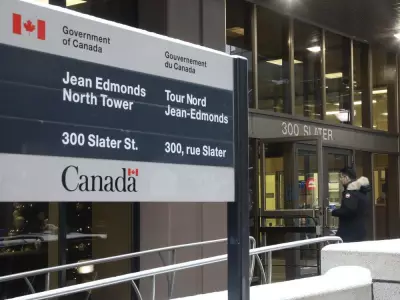
In a stark announcement that signals turbulent times ahead for Canada's federal workforce, the country's highest-ranking public servant has confirmed that both programs and staff will face significant reductions as the Liberal government aggressively pursues billions in savings.
Massive Savings Target Set
Janice Charette, Clerk of the Privy Council, delivered the sobering news to deputy ministers, revealing that the Treasury Board is spearheading an ambitious initiative to identify $15.4 billion in government savings over the next five years. This sweeping cost-cutting measure comes as the federal government aims to reallocate funds toward other priority areas while addressing fiscal pressures.
Strategic Operating Reviews Underway
The savings strategy involves comprehensive operating reviews across multiple government departments and agencies. According to internal communications obtained by CTV News, these reviews are designed to be "strategic and thoughtful" rather than applying across-the-board cuts.
Key areas being examined include:
- Consulting and professional services spending
- Travel expenditures
- Employee relocation costs
- Information technology investments
- Real property portfolio optimization
Workforce Impacts Loom Large
Perhaps most concerning for federal employees is the clear indication that staffing levels will be affected. While the government has emphasized its commitment to avoiding layoffs where possible, the reality remains that position reductions will occur through attrition and other workforce adjustment measures.
The government's approach includes:
- Prioritizing attrition and redeployment over direct layoffs
- Implementing strategic hiring freezes in certain areas
- Offering early retirement options where feasible
- Providing support services for affected employees
Program Delivery Transformation
Beyond personnel changes, the savings initiative will inevitably affect how Canadians access government services. Departments are being directed to identify programs that could be streamlined, modernized, or potentially eliminated if they no longer serve their intended purpose effectively.
This modernization effort aims to leverage digital transformation to maintain service quality while reducing operational costs. However, the transition period may create temporary service disruptions as new systems and processes are implemented.
Fiscal Context and Political Implications
The cost-cutting drive comes amid increasing pressure on government spending and growing concerns about the federal deficit. With the next federal budget expected to continue fiscal restraint measures, these operational reviews represent the practical implementation of the government's fiscal framework.
Public service unions have expressed concern about the potential impact on service delivery and employee morale. Meanwhile, opposition parties are watching closely, likely to scrutinize whether the cuts affect frontline services that Canadians depend on.
As the savings plan unfolds over the coming months, federal employees and Canadian citizens alike will be monitoring how these significant changes affect the delivery of essential government services nationwide.





